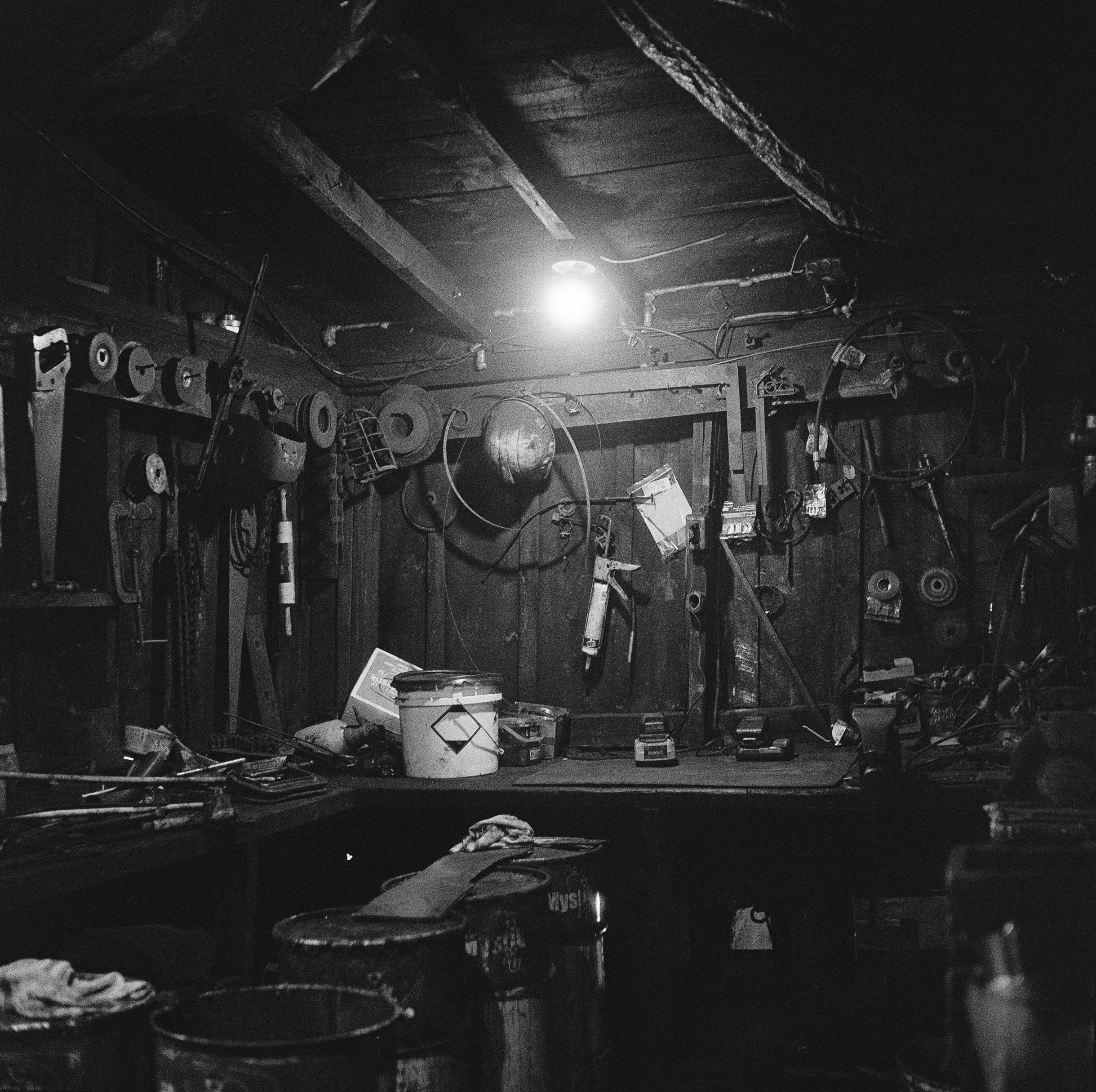ANTHRACITE
300 million years old, anthracite is the purest and hardest coal, with a shiny, deep black appearance. Unlike bituminous, or "soft" coal, which is mined throughout the US, anthracite is only found in central Pennsylvania. Tucked away in the Appalachian hills, these photos were taken in the last underground anthracite mines- the final remains of a once mammoth American industry.
From skeletal structures on the hillside, the miners are hoisted a hundred feet down below the surface, riding in the same muddy bucket used to haul the coal back up. Most of the men are 3rd or 4th generation coal miners, and much of the machinery is several generations older than the miners themselves, passed on from mine to mine as each one shut down. Hundreds of such mines once covered the region; today, only several are left, and at the end of 2022, only thirty miners still worked underground- a number which has since decreased.
Going underground is like traveling back in time. Anthracite mining is done the same way it was 100 years ago: an inclined slope is dug downwards from the surface, from which a tunnel branches off, called a “Gangway”. Following horizontally along the coal vein, the miners work their way upwards from the gangway, chasing the coal and removing as little rock as possible.
Anthracite deposits are particularly uneven, resembling waves between layers of rock. The coal vein here is barely 4 feet thick, and steeply pitched. As the miners work their way upwards, they create a network of passages barely tall enough to crouch in. Fresh cut timbers support the solid-rock roof, and wooden ladders snake their way up through the voids to where explosives and hand tools pick at the shiny black anthracite. Gravity does the rest: the blasted coal slides down to a chute, where it’s loaded into a small rail cart and pushed along the gangway to the inclined slope to be taken to the surface, processed, crushed, and sold as heating fuel.

























